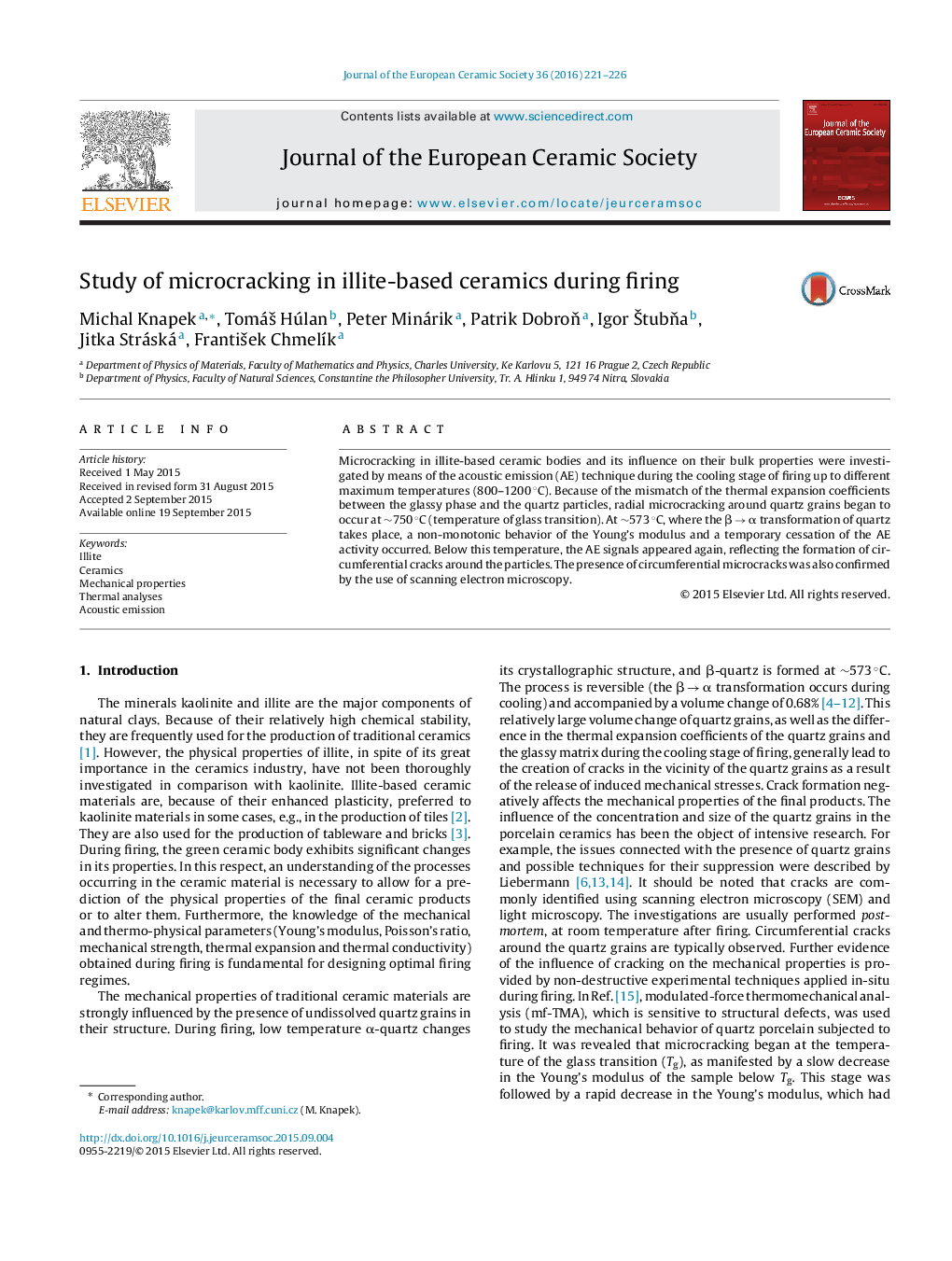| Article ID | Journal | Published Year | Pages | File Type |
|---|---|---|---|---|
| 1473869 | Journal of the European Ceramic Society | 2016 | 6 Pages |
Microcracking in illite-based ceramic bodies and its influence on their bulk properties were investigated by means of the acoustic emission (AE) technique during the cooling stage of firing up to different maximum temperatures (800–1200 °C). Because of the mismatch of the thermal expansion coefficients between the glassy phase and the quartz particles, radial microcracking around quartz grains began to occur at ∼750 °C (temperature of glass transition). At ∼573 °C, where the β → α transformation of quartz takes place, a non-monotonic behavior of the Young’s modulus and a temporary cessation of the AE activity occurred. Below this temperature, the AE signals appeared again, reflecting the formation of circumferential cracks around the particles. The presence of circumferential microcracks was also confirmed by the use of scanning electron microscopy.
